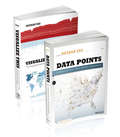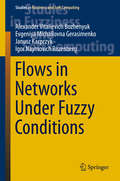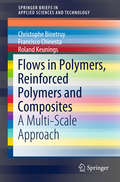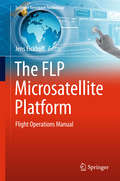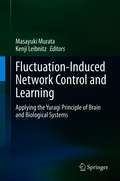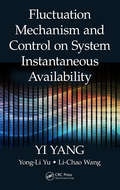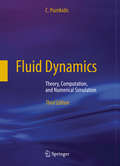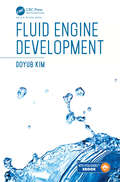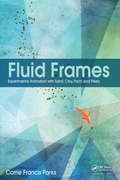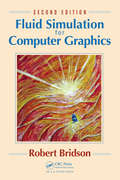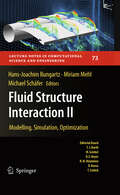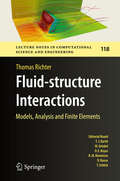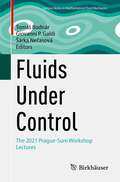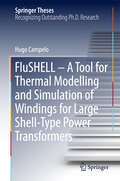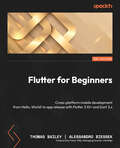- Table View
- List View
Flowchart Programme Bug Example (tactile)
by RnibThis is a diagram of a flowchart showing an example of a programme bug. It shows the processes in making a cup of tea to illustrate the programme bug.
Flowcharts - Process Symbols for Programme and System Flowcharts (tactile)
by RnibThis diagram shows nine different process symbols for programme and system flowcharts. They are start or stop, process, decision, input or output, keyboard input, desk file, tape file, process, paper output.
FlowingData.com Data Visualization Set
by Nathan YauVisualize This is a guide on how to visualize and tell stories with data, providing practical design tips complemented with step-by-step tutorials. It begins with a description of the huge growth of data and visualization in industry, news, and gov't and opportunities for those who tell stories with data. Logically it moves on to actual stories in data-statistical ones with trends and human stories. the technical part comes up quickly with how to gather, parse and format data with Python, R, Excel, Google docs, etc and details tools to visualize data-native graphics for the Web like ActionScript, Flash libraries, PHP, JavaScript, CSS, HTML. Every chapter provides an example as well. Patterns over time and kinds of data charts are followed by proportions, chart types and examples. Next, examples and descriptions of outliers and how to show them, different kinds of maps, how to guide your readers and explain the data "in the visualization". The book ends with a value-add appendix on graphical perception. Data Points focuses on the approach to visualization and data. Visualization is a medium that can be used as a tool, art, a way to tell stories, etc., Data Points guides readers through making data approachable through visualization techniques and best practices. The focus is on designing with a purpose in mind. Data Points discusses why recipes (from the rules) work and expands on how readers can make their own recipes. The book is example-driven, featuring work from people in areas of art, design, business, statistics, computer science, cartography, and online media, as well as many of the author's own illustrations. The major sections of the book cover: Visualization as Medium -- In the same way not all movies are documentaries, not all visualization is about optimal visual perception. Data Representation -- There are rules across all visualization applications, such as the use of appropriate shapes to accurately represent values. Design with Purpose -- Rules can be broken though. It all depends on who and what you're designing for. Data Points digs deep into the foundations of data visualization: Understanding Data and Visualization Representing Data Exploring Data Visually Designing for an Audience Visualizing with Clarity Putting Everything Into Practice with Tools and Resources
FlowingData.com Data Visualization Set
by Nathan YauVisualize This is a guide on how to visualize and tell stories with data, providing practical design tips complemented with step-by-step tutorials. It begins with a description of the huge growth of data and visualization in industry, news, and gov't and opportunities for those who tell stories with data. Logically it moves on to actual stories in data-statistical ones with trends and human stories. the technical part comes up quickly with how to gather, parse and format data with Python, R, Excel, Google docs, etc and details tools to visualize data-native graphics for the Web like ActionScript, Flash libraries, PHP, JavaScript, CSS, HTML. Every chapter provides an example as well. Patterns over time and kinds of data charts are followed by proportions, chart types and examples. Next, examples and descriptions of outliers and how to show them, different kinds of maps, how to guide your readers and explain the data "in the visualization". The book ends with a value-add appendix on graphical perception. Data Points focuses on the approach to visualization and data. Visualization is a medium that can be used as a tool, art, a way to tell stories, etc., Data Points guides readers through making data approachable through visualization techniques and best practices. The focus is on designing with a purpose in mind. Data Points discusses why recipes (from the rules) work and expands on how readers can make their own recipes. The book is example-driven, featuring work from people in areas of art, design, business, statistics, computer science, cartography, and online media, as well as many of the author's own illustrations. The major sections of the book cover: Visualization as Medium -- In the same way not all movies are documentaries, not all visualization is about optimal visual perception. Data Representation -- There are rules across all visualization applications, such as the use of appropriate shapes to accurately represent values. Design with Purpose -- Rules can be broken though. It all depends on who and what you're designing for. Data Points digs deep into the foundations of data visualization: Understanding Data and Visualization Representing Data Exploring Data Visually Designing for an Audience Visualizing with Clarity Putting Everything Into Practice with Tools and Resources
Flows in Networks Under Fuzzy Conditions (Studies in Fuzziness and Soft Computing #346)
by Alexander Vitalievich Bozhenyuk Evgeniya Michailovna Gerasimenko Janusz Kacprzyk Igor Naymovich RozenbergThis book offers a comprehensive introduction to fuzzy methods for solving flow tasks in both transportation and networks. It analyzes the problems of minimum cost and maximum flow finding with fuzzy nonzero lower flow bounds, and describes solutions to minimum cost flow finding in a network with fuzzy arc capacities and transmission costs. After a concise introduction to flow theory and tasks, the book analyzes two important problems. The first is related to determining the maximum volume for cargo transportation in the presence of uncertain network parameters, such as environmental changes, measurement errors and repair work on the roads. These parameters are represented here as fuzzy triangular, trapezoidal numbers and intervals. The second problem concerns static and dynamic flow finding in networks under fuzzy conditions, and an effective method that takes into account the network’s transit parameters is presented here. All in all, the book provides readers with a practical reference guide to state-of-the art fuzzy methods for solving flow tasks and offers a valuable resource for all researchers and postgraduate students in the fields of network theory, fuzzy models and decision-making.
Flows in Polymers, Reinforced Polymers and Composites: A Multi-Scale Approach (SpringerBriefs in Applied Sciences and Technology)
by Christophe Binetruy Francisco Chinesta Roland KeuningsThis book gives a detailed and practical introduction to complex flows of polymers and reinforced polymers as well as the flow of simple fluids in complex microstructures.Over the last decades, an increasing number of functional and structural parts, made so far with metals, has been progressively reengineered by replacing metallic materials by polymers, reinforced polymers and composites. The motivation for this substitution may be the weight reduction, the simpler, cheaper or faster forming process, or the ability to exploit additional functionalities.The present Brief surveys modern developments related to the multi-scale modeling and simulation of polymers, reinforced polymers, that involve a flowing microstructure and continuous fiber-reinforced composites, wherein the fluid flows inside a nearly stationary multi-scale microstructure. These developments concern both multi-scale modeling, defining bridges between the micro and macro scales - with special emphasis on the mesoscopic scale at which kinetic theory descriptions apply and advanced simulation techniques able to address efficiently the ever more complex and detailed models defined at different scales.This book is addressed to students (Master and doctoral levels), researchers and professionals interested in computational rheology and material forming processes involving polymers, reinforced polymers and composites. It provides a unique coverage of the state of the art in these multi-disciplinary fields.
The FLP Microsatellite Platform: Flight Operations Manual (Springer Aerospace Technology)
by Jens EickhoffThis book represents the Flight Operations Manual for a reusable microsatellite platform – the “Future Low-cost Platform” (FLP), developed at the University of Stuttgart, Germany. It provides a basic insight on the onboard software functions, the core data handling system and on the power, communications, attitude control and thermal subsystem of the platform. Onboard failure detection, isolation and recovery functions are treated in detail. The platform is suited for satellites in the 50-150 kg class and is baseline of the microsatellite “Flying Laptop” from the University.The book covers the essential information for ground operators to controls an FLP-based satellite applying international command and control standards (CCSDS and ECSS PUS).Furthermore it provides an overview on the Flight Control Center in Stuttgart and on the link to the German Space Agency DLR Ground Station which is used for early mission phases. Flight procedure and mission planning chapters complement the book.
Fluctuation-Induced Network Control and Learning: Applying the Yuragi Principle of Brain and Biological Systems
by Masayuki Murata Kenji LeibnitzFrom theory to application, this book presents research on biologically and brain-inspired networking and machine learning based on Yuragi, which is the Japanese term describing the noise or fluctuations that are inherently used to control the dynamics of a system. The Yuragi mechanism can be found in various biological contexts, such as in gene expression dynamics, molecular motors in muscles, or the visual recognition process in the brain. Unlike conventional network protocols that are usually designed to operate under controlled conditions with a predefined set of rules, the probabilistic behavior of Yuragi-based control permits the system to adapt to unknown situations in a distributed and self-organized manner leading to a higher scalability and robustness.The book consists of two parts. Part 1 provides in four chapters an introduction to the biological background of the Yuragi concept as well as how these are applied to networking problems. Part 2 provides additional contributions that extend the original Yuragi concept to a Bayesian attractor model from human perceptual decision making. In the six chapters of the second part, applications to various fields in information network control and artificial intelligence are presented, ranging from virtual network reconfigurations, a software-defined Internet of Things, and low-power wide-area networks.This book will benefit those working in the fields of information networks, distributed systems, and machine learning who seek new design mechanisms for controlling large-scale dynamically changing systems.
Fluctuation Mechanism and Control on System Instantaneous Availability
by Yi Yang Yong-Li Yu Li-Chao WangFluctuation Mechanism and Control on System Instantaneous Availability facilitates the development of modeling and identification skills for both theoretical research and applications. Supplying an overall summary of current research results in fluctuation analysis of instantaneous availability, it covers the theory, methodology, and specific engineering implementation required to conduct equipment instantaneous availability analysis. Presenting practical methods and tools, it describes how to control the matching transition of new equipment systems as a result of interactions among sub-systems.
Fluctuation Mechanism and Control on System Instantaneous Availability
by Yi Yang Yong-Li Yu Li-Chao WangFluctuation Mechanism and Control on System Instantaneous Availability facilitates the development of modeling and identification skills for both theoretical research and applications. Supplying an overall summary of current research results in fluctuation analysis of instantaneous availability, it covers the theory, methodology, and specific engineering implementation required to conduct equipment instantaneous availability analysis. Presenting practical methods and tools, it describes how to control the matching transition of new equipment systems as a result of interactions among sub-systems.
Fluid Dynamics: Theory, Computation, and Numerical Simulation
by C. PozrikidisThis book provides an accessible introduction to the basic theory of fluid mechanics and computational fluid dynamics (CFD) from a modern perspective that unifies theory and numerical computation. Methods of scientific computing are introduced alongside with theoretical analysis and MATLAB® codes are presented and discussed for a broad range of topics: from interfacial shapes in hydrostatics, to vortex dynamics, to viscous flow, to turbulent flow, to panel methods for flow past airfoils.The third edition includes new topics, additional examples, solved and unsolved problems, and revised images. It adds more computational algorithms and MATLAB programs. It also incorporates discussion of the latest version of the fluid dynamics software library FDLIB, which is freely available online. FDLIB offers an extensive range of computer codes that demonstrate the implementation of elementary and advanced algorithms and provide an invaluable resource for research, teaching, classroom instruction, and self-study.This book is a must for students in all fields of engineering, computational physics, scientific computing, and applied mathematics. It can be used in both undergraduate and graduate courses in fluid mechanics, aerodynamics, and computational fluid dynamics. The audience includes not only advanced undergraduate and entry-level graduate students, but also a broad class of scientists and engineers with a general interest in scientific computing.
Fluid Engine Development
by Doyub KimFrom the splash of breaking waves to turbulent swirling smoke, the mathematical dynamics of fluids are varied and continue to be one of the most challenging aspects in animation. Fluid Engine Development demonstrates how to create a working fluid engine through the use of particles and grids, and even a combination of the two. Core algorithms are explained from a developer’s perspective in a practical, approachable way that will not overwhelm readers. The Code Repository offers further opportunity for growth and discussion with continuously changing content and source codes. This book helps to serve as the ultimate guide to navigating complex fluid animation and development. Explains how to create a fluid simulation engine from scratch Offers an approach that is code-oriented rather than math-oriented, allowing readers to learn how fluid dynamics works with code, with downloadable code available Explores various kinds of simulation techniques for fluids using particles and grids Discusses practical issues such as data structure design and optimizations Covers core numerical tools including linear system and level set solvers
Fluid Engine Development
by Doyub KimFrom the splash of breaking waves to turbulent swirling smoke, the mathematical dynamics of fluids are varied and continue to be one of the most challenging aspects in animation. Fluid Engine Development demonstrates how to create a working fluid engine through the use of particles and grids, and even a combination of the two. Core algorithms are explained from a developer’s perspective in a practical, approachable way that will not overwhelm readers. The Code Repository offers further opportunity for growth and discussion with continuously changing content and source codes. This book helps to serve as the ultimate guide to navigating complex fluid animation and development. Explains how to create a fluid simulation engine from scratch Offers an approach that is code-oriented rather than math-oriented, allowing readers to learn how fluid dynamics works with code, with downloadable code available Explores various kinds of simulation techniques for fluids using particles and grids Discusses practical issues such as data structure design and optimizations Covers core numerical tools including linear system and level set solvers
Fluid Frames: Experimental Animation with Sand, Clay, Paint, and Pixels
by Corrie Francis ParksOnce the realm of a few stalwart artists, animating with sand, clay, and wet paint is now accessible for all filmmakers with an experimental frame of mind. Created directly under the camera with frame-by-frame stopmotion, this "fluid frame animation" provides a completely unique visual world for animators. While pioneering animators such as Caroline Leaf, Alexander Petrov, and Ishu Patel paved the way, the availability of frame capture programs, compositing software and digital workflow is opening up new avenues of exploration for artists of all experience levels. This book will walk you through setting up your studio, choosing and working with your materials, and combining the physical under-the-camera production with digital compositing and effects to enhance your animation.· Firsthand advice from experimental animation veterans and rising stars in the field· Covers the digital aspects of experimental animation, including the latest techniques in After Effects CC· Tutorials and source files for under-the-camera approaches and After Effects enhancements on the book’s companion website In addition to the practical advice, you’ll find historical and contemporary examples of successful films, step-by-step tutorials for working under the camera and working with the footage digitally, and interviews and tips from artists who are currently pushing the boundaries in these experimental mediums. Stacked with information and images from over 30 artists, this book is an indispensable resource for both the student and professional wishing to get their hands dirty in an increasingly digital world.
Fluid Frames: Experimental Animation with Sand, Clay, Paint, and Pixels
by Corrie Francis ParksOnce the realm of a few stalwart artists, animating with sand, clay, and wet paint is now accessible for all filmmakers with an experimental frame of mind. Created directly under the camera with frame-by-frame stopmotion, this "fluid frame animation" provides a completely unique visual world for animators. While pioneering animators such as Caroline Leaf, Alexander Petrov, and Ishu Patel paved the way, the availability of frame capture programs, compositing software and digital workflow is opening up new avenues of exploration for artists of all experience levels. This book will walk you through setting up your studio, choosing and working with your materials, and combining the physical under-the-camera production with digital compositing and effects to enhance your animation.· Firsthand advice from experimental animation veterans and rising stars in the field· Covers the digital aspects of experimental animation, including the latest techniques in After Effects CC· Tutorials and source files for under-the-camera approaches and After Effects enhancements on the book’s companion website In addition to the practical advice, you’ll find historical and contemporary examples of successful films, step-by-step tutorials for working under the camera and working with the footage digitally, and interviews and tips from artists who are currently pushing the boundaries in these experimental mediums. Stacked with information and images from over 30 artists, this book is an indispensable resource for both the student and professional wishing to get their hands dirty in an increasingly digital world.
Fluid Simulation for Computer Graphics
by Robert BridsonA practical introduction, the second edition of Fluid Simulation for Computer Graphics shows you how to animate fully three-dimensional incompressible flow. It covers all the aspects of fluid simulation, from the mathematics and algorithms to implementation, while making revisions and updates to reflect changes in the field since the first edition. Highlights of the Second Edition New chapters on level sets and vortex methods Emphasizes hybrid particle–voxel methods, now the industry standard approach Covers the latest algorithms and techniques, including: fluid surface reconstruction from particles; accurate, viscous free surfaces for buckling, coiling, and rotating liquids; and enhanced turbulence for smoke animation Adds new discussions on meshing, particles, and vortex methods The book changes the order of topics as they appeared in the first edition to make more sense when reading the first time through. It also contains several updates by distilling author Robert Bridson’s experience in the visual effects industry to highlight the most important points in fluid simulation. It gives you an understanding of how the components of fluid simulation work as well as the tools for creating your own animations.
Fluid Simulation for Computer Graphics
by Robert BridsonA practical introduction, the second edition of Fluid Simulation for Computer Graphics shows you how to animate fully three-dimensional incompressible flow. It covers all the aspects of fluid simulation, from the mathematics and algorithms to implementation, while making revisions and updates to reflect changes in the field since the first edition. Highlights of the Second Edition New chapters on level sets and vortex methods Emphasizes hybrid particle–voxel methods, now the industry standard approach Covers the latest algorithms and techniques, including: fluid surface reconstruction from particles; accurate, viscous free surfaces for buckling, coiling, and rotating liquids; and enhanced turbulence for smoke animation Adds new discussions on meshing, particles, and vortex methods The book changes the order of topics as they appeared in the first edition to make more sense when reading the first time through. It also contains several updates by distilling author Robert Bridson’s experience in the visual effects industry to highlight the most important points in fluid simulation. It gives you an understanding of how the components of fluid simulation work as well as the tools for creating your own animations.
Fluid-Structure Interaction: Modelling, Simulation, Optimisation (Lecture Notes in Computational Science and Engineering #53)
by Hans-Joachim Bungartz Michael SchäferThis volume in the series Lecture Notes in Computational Science and Engineering presents a collection of papers presented at the International Workshop on FSI, held in October 2005 in Hohenwart and organized by DFG's Research Unit 493 "FSI: Modeling, Simulation, and Optimization". The papers address partitioned and monolithic coupling approaches, methodical issues and applications, and discuss FSI from the mathematical, informatics, and engineering points of view.
Fluid Structure Interaction II: Modelling, Simulation, Optimization (Lecture Notes in Computational Science and Engineering #73)
by Hans-Joachim Bungartz Miriam Mehl Michael SchäferFluid-structure interactions (FSI), i.e., the interplay of some moveable or deformable structure with an internal or surrounding fluid, are among the most widespread and most challenging coupled or multi-physics problems. Although much has been accomplished in developing good computational FSI methods and despite convincing solutions to a number of classes of problems including those presented in this book, there is a need for more comprehensive studies showing that the computational methods proposed are reliable, robust, and efficient beyond the classes of problems they have successfully been applied to.This volume of LNCSE, a sequel to vol. 53, which contained, among others, the first numerical benchmark for FSI problems and has received considerable attention since then, presents a collection of papers from the "First International Workshop on Computational Engineering - special focus FSI," held in Herrsching in October 2009 and organized by three DFG-funded consortia. The papers address all relevant aspects of FSI simulation and discuss FSI from the mathematical, informatical, and engineering perspective.
Fluid-structure Interactions: Models, Analysis and Finite Elements (Lecture Notes in Computational Science and Engineering #118)
by Thomas RichterThis book starts by introducing the fundamental concepts of mathematical continuum mechanics for fluids and solids and their coupling. Special attention is given to the derivation of variational formulations for the subproblems describing fluid- and solid-mechanics as well as the coupled fluid-structure interaction problem. Two monolithic formulations for fluid-structure interactions are described in detail: the well-established ALE formulation and the modern Fully Eulerian formulation, which can effectively deal with problems featuring large deformation and contact. Further, the book provides details on state-of-the-art discretization schemes for fluid- and solid-mechanics and considers the special needs of coupled problems with interface-tracking and interface-capturing techniques. Lastly, advanced topics like goal-oriented error estimation, multigrid solution and gradient-based optimization schemes are discussed in the context of fluid-structure interaction problems.
Fluids Under Control: The 2021 Prague-Sum Workshop Lectures (Advances in Mathematical Fluid Mechanics)
by Tomáš Bodnár Giovanni P. Galdi Šárka NečasováThis volume presents state-of-the-art developments in theoretical and applied fluid mechanics. Chapters are based on lectures given at a workshop in the summer school Fluids under Control, held in Prague on August 25, 2021. Readers will find a thorough analysis of current research topics, presented by leading experts in their respective fields. Specific topics covered include: Magnetohydrodynamic systemsThe steady Navier-Stokes-Fourier systemBoussinesq equationsFluid-structure-acoustic interactions Fluids under Control will be a valuable resource for students interested in mathematical fluid mechanics.
Fluidware: Novel Approaches for Large-Scale IoT Systems (Internet of Things)
by Giancarlo Fortino Franco Zambonelli Mirko Viroli Barbara ReThis book provides an overview of the many approaches that can adopted for programming and deploying highly-adaptive and large-scale IoT systems, with a specific focus on the key results achieved within the Fluidware research project. The authors start by presenting Fluidware, which develops a novel programming model for IoT services and applications, along with the associated and robust large-scale IoT services and applications. Starting from previous findings in the areas of field-based coordination, collective adaptive systems, stream computing and aggregate computing, the authors address the complexity of building modern, large-scale IoT systems, by a full-fledged engineering approach revolving around a new notion of distributed programming. The authors show how the key innovative idea of Fluidware is to abstract collectives of devices of the IoT fabric as sources, digesters, and targets of distributed "flows" of contextualized events, carrying information about data produced and actuating commands. The book is divided into three parts: (i) the first part is a general introduction to the Fluidware ideas and to the key problems associated with programming IoT systems, (ii) the second part presents the key results achieved within the Fluidware project; (iii) the third part identified open challenges and research directions.
FluSHELL – A Tool for Thermal Modelling and Simulation of Windings for Large Shell-Type Power Transformers (Springer Theses)
by Hugo CampeloThis thesis addresses a novel application of network modelling methodologies to power transformers. It develops a novel thermal model and compares its performance against that of a commercial computational fluid dynamics (CFD) code, as well as in experiments conducted in a dedicated setup built exclusively for this purpose. Hence, the thesis cross-links three of the most important aspects in high-quality research: model development, simulation and experimental validation.Network modelling is used to develop a tool to simulate the thermal performance of power transformers, widely acknowledged to be critical assets in electrical networks. After the strong de-regulation of electricity markets and de-carbonization of worldwide economies, electrical networks have been changing fast. Both asset owners and equipment manufacturers are being driven to develop increasingly accurate modelling capabilities in order to optimize either their operation or their design. Temperature is a critical parameter in every electric machine and power transformers are no exception. As such, the thesis is relevant for a wide range of stakeholders, from utilities to power transformer manufacturers, as well as researchers interested in the energy industry. It is written in straightforward language and employs a highly pedagogic approach, making it also suitable for non-experts.
Flutter for Beginners: Cross-platform mobile development from Hello, World! to app release with Flutter 3.10+ and Dart 3.x
by Thomas Bailey Alessandro BiessekFollow this step-by-step illustrated guide to launch your own Flutter apps and gain hands-on experienceKey FeaturesGet up to speed with the basics of Dart programming and delve into Flutter developmentLearn about Flutter widgets, plugins, and animations to create a high-quality, user-friendly appPackage and deploy your Flutter apps to achieve native-like performancePurchase of the print or Kindle book includes a free PDF eBookBook DescriptionThere have been many attempts at creating frameworks that are truly cross-platform, but most struggle to create a native-like experience at high-performance levels. Flutter achieves this with an elegant design and a wealth of third-party plugins, solidifying its status as the future of mobile app development. If you are a mobile developer who wants to create rich and expressive native apps with the latest Google Flutter framework, this book is for you. You’ll start with the basics of cross-platform development frameworks, specifically Flutter. You’ll then explore the Dart programming language which is the foundation of the Flutter framework. Next, you’ll get a feel for Flutter and how to create your first app, followed by an exploration of the various popular plugins that supplement the Flutter framework. Finally, you’ll explore testing and app release, including some common glitches that you may experience. By the end of this book, you’ll be well-equipped to create and release a basic Flutter app along with gaining a solid understanding of the Flutter framework and Dart language.What you will learnUnderstand the Flutter framework and cross-platform developmentAcclimate the fundamentals of the Dart programming languageExplore Flutter widgets, the core widget library, and stateful and stateless widgetsDiscover the complete development lifecycle, including testing and debuggingGet familiar with both the mobile and web app release processesDig deeper into more advanced Flutter concepts like animationExplore common Flutter plugins ad how to use themDiscover the Flutter community and how to stay up-to-dateWho this book is forIf you are an existing mobile developer seeking a better way to develop cross-platform apps, an existing software developer looking to explore mobile app development, or someone investigating mobile apps and simply wants to know what the Flutter fuss is about, this is the book for you. Prior knowledge of Flutter and Dart is not required.

